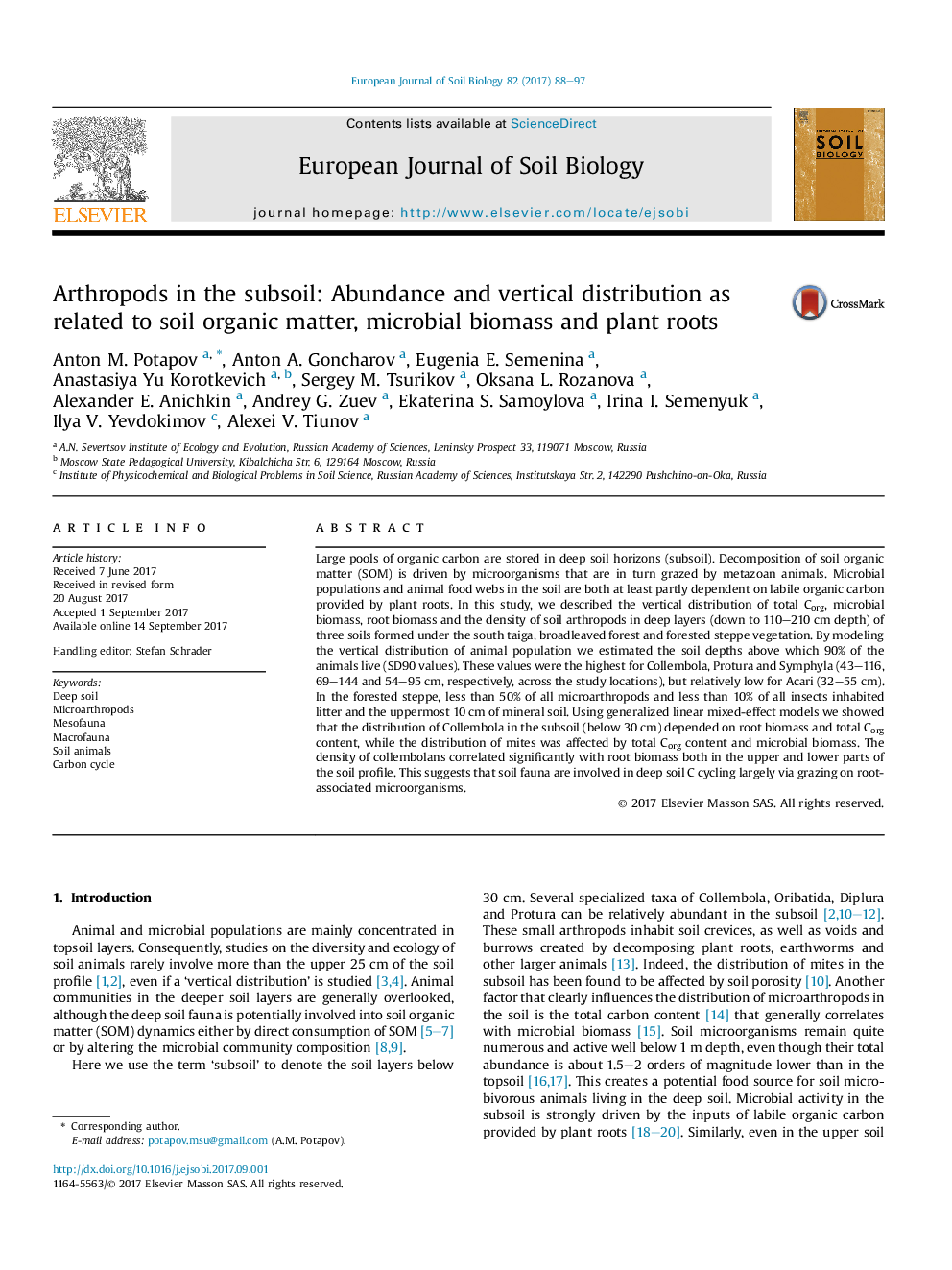| کد مقاله | کد نشریه | سال انتشار | مقاله انگلیسی | نسخه تمام متن |
|---|---|---|---|---|
| 5744205 | 1618110 | 2017 | 10 صفحه PDF | دانلود رایگان |
- Abundance of animals was measured in three soil types down to the depth of 2Â m.
- Collembola, Protura and Symphyla but not Acari are abundant in deep soil layers.
- Distribution of animals in the subsoil is related to organic sources.
- Abundance of Collembola in the subsoil correlated significantly with root biomass.
- Soil fauna are involved in dynamics of deep soil organic matter.
Large pools of organic carbon are stored in deep soil horizons (subsoil). Decomposition of soil organic matter (SOM) is driven by microorganisms that are in turn grazed by metazoan animals. Microbial populations and animal food webs in the soil are both at least partly dependent on labile organic carbon provided by plant roots. In this study, we described the vertical distribution of total Corg, microbial biomass, root biomass and the density of soil arthropods in deep layers (down to 110-210Â cm depth) of three soils formed under the south taiga, broadleaved forest and forested steppe vegetation. By modeling the vertical distribution of animal population we estimated the soil depths above which 90% of the animals live (SD90 values). These values were the highest for Collembola, Protura and Symphyla (43-116, 69-144 and 54-95Â cm, respectively, across the study locations), but relatively low for Acari (32-55Â cm). In the forested steppe, less than 50% of all microarthropods and less than 10% of all insects inhabited litter and the uppermost 10Â cm of mineral soil. Using generalized linear mixed-effect models we showed that the distribution of Collembola in the subsoil (below 30Â cm) depended on root biomass and total Corg content, while the distribution of mites was affected by total Corg content and microbial biomass. The density of collembolans correlated significantly with root biomass both in the upper and lower parts of the soil profile. This suggests that soil fauna are involved in deep soil C cycling largely via grazing on root-associated microorganisms.
285
Journal: European Journal of Soil Biology - Volume 82, September 2017, Pages 88-97
